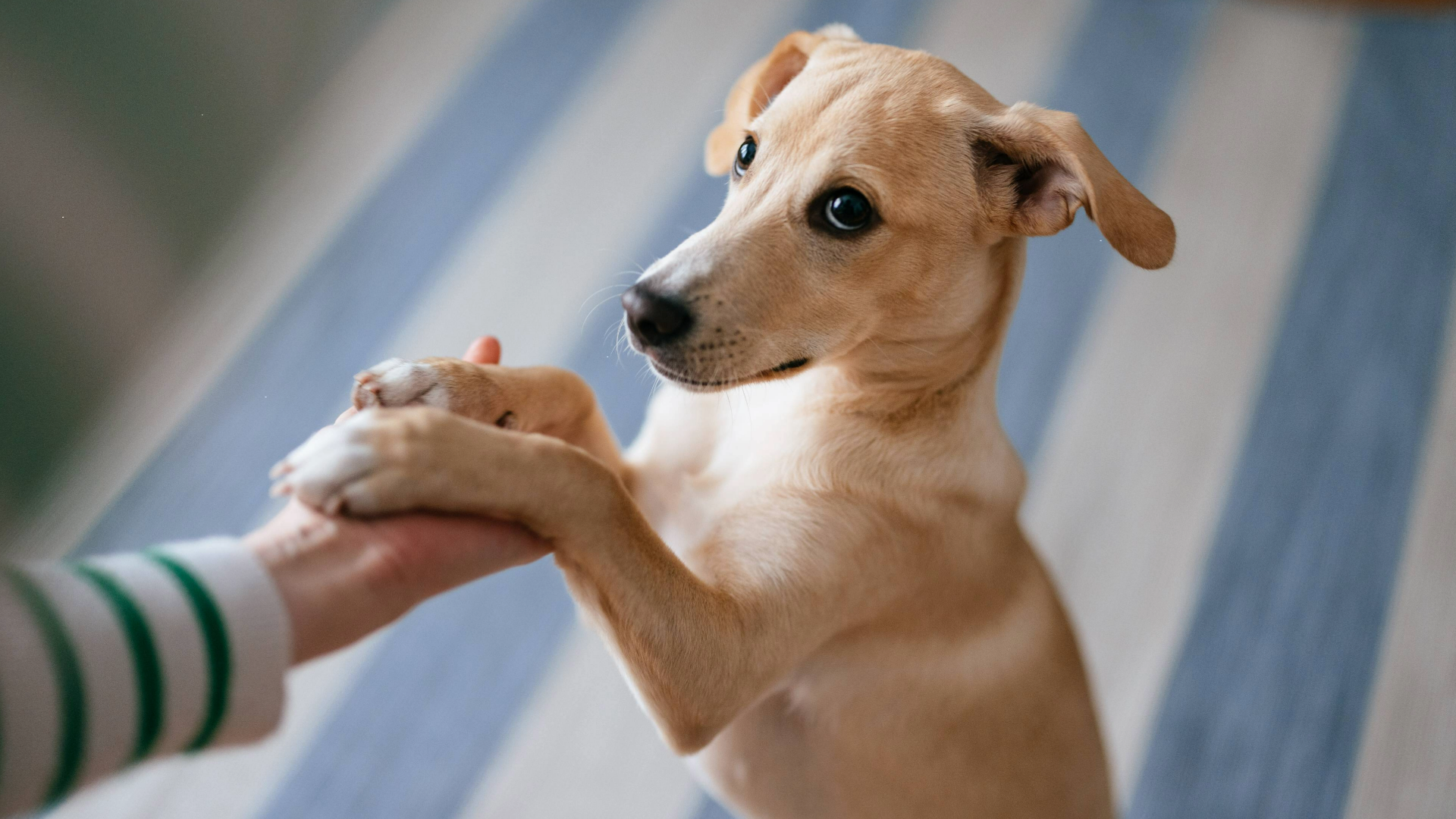
Ever wondered how to greet a dog? It’s actually a really good question. Greeting a dog incorrectly can frighten them or make them uncomfortable, making them more likely to bite or ruining your relationship with them. In my view, there’s no perfect right way to greet a dog (it depends on the dog!), but there are plenty of wrong ways.
When I first started studying to become a vet, greeting dogs was covered on day one. We had a session with our tutor, a staff pet, and a more experienced student, who showed us the right way to greet a dog. It was memorable, because the poor dog got a bit overwhelmed and bit the older student – he was retired from practical sessions after that!
Anyway, it’s understandably an essential skill for any veterinarian to know, and it’s something I’ve practiced multiple times a day in my nine years of being a vet. I’m going to share my top tips for greeting a dog with you now (and the best dog treats might come in handy)…
How to greet a dog
Step 1: Ask permission
The first and most important step is to ask the owner’s permission before you greet any dog you don’t know. And then you need to respect the owner’s decision.
Sometimes, approaching a dog isn’t safe for you, but oftentimes owners who decline do so for their dog’s sake. The dog might be part way through training, have a sore area, or be nervous of strangers.
Even if you know the dog, if you haven’t seen them for a while, it’s best to check in with the owner before you approach, in case something has changed.
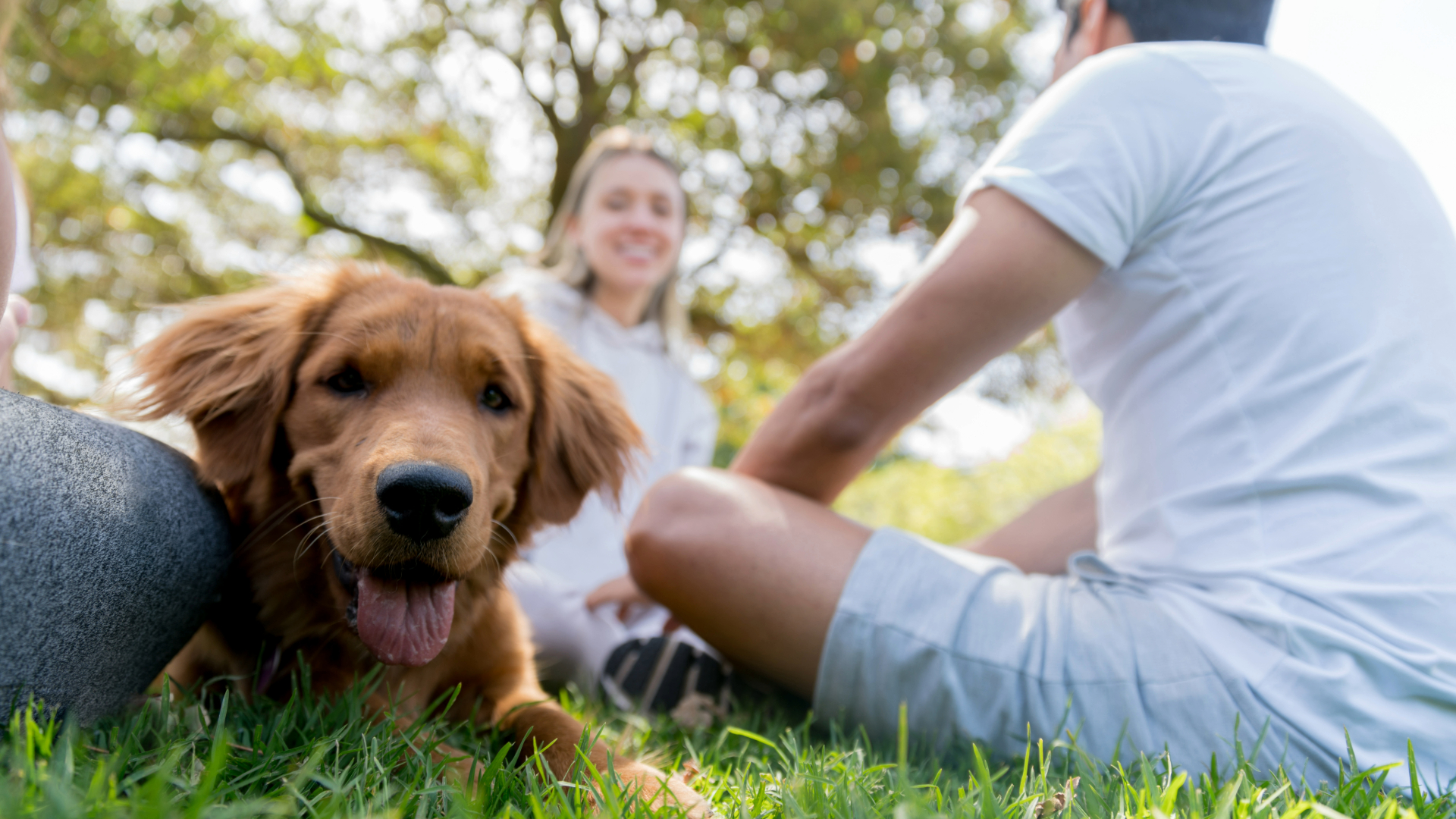
Step 2: Make your body smaller (if it's safe to do so)
In general, dogs are more likely to approach you if you’re smaller - it makes you less scary. If you can crouch down safely, do so. However, if you’re unsure of the dog, it’s safer to remain standing rather than put your face and neck within easy reach if the dog was to bite.
One tip from vet school is never to kneel – if you crouch instead, then you naturally fall away from danger if the dog lunges, whereas kneeling leaves you vulnerable.
Step 3: Turn side-on and don’t make eye contact
It’s best not to make eye contact, and face-to-face can also feel threatening to a dog. But turning side-on, presenting your shoulder and outer thigh, you look more approachable.
Keep the dog in your peripheral vision and talk to the owner – this takes the pressure off the dog and makes them more likely to explore and approach.
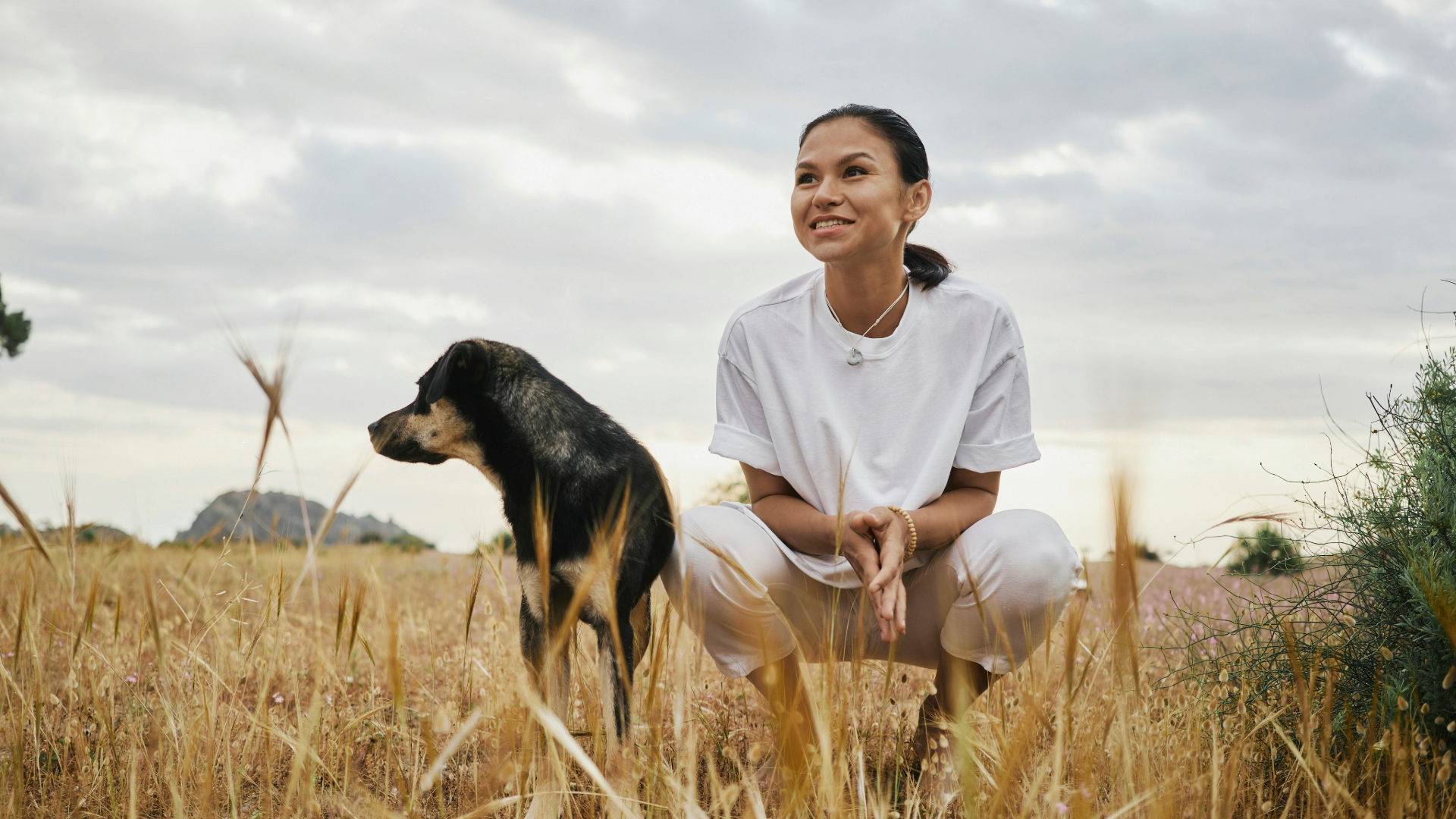
Step 4: Call the dog to you with your voice and body
If the dog still hasn’t approached, you can softly call them to you. A gentle call of their name, and slowly holding out your hand, should work.
When you hold out your hand, keep your fist closed and your fingers tucked away – to us, it can look like a fist (and therefore threatening), but dogs don’t see it like this, and tucking away your fingers keeps them safer if a dog suddenly snapped. Let them sniff your hand.
Step 5: Give them a treat (if allowed!)
If the owner says it’s OK, give the dog a treat if you have one. It’s a way to make the experience positive and helps them get to know you.
Ideally, they’ll take it gently from your hand, but if you’re unsure you can roll it to them or sprinkle some on the floor nearby. Don’t forget to move slowly.
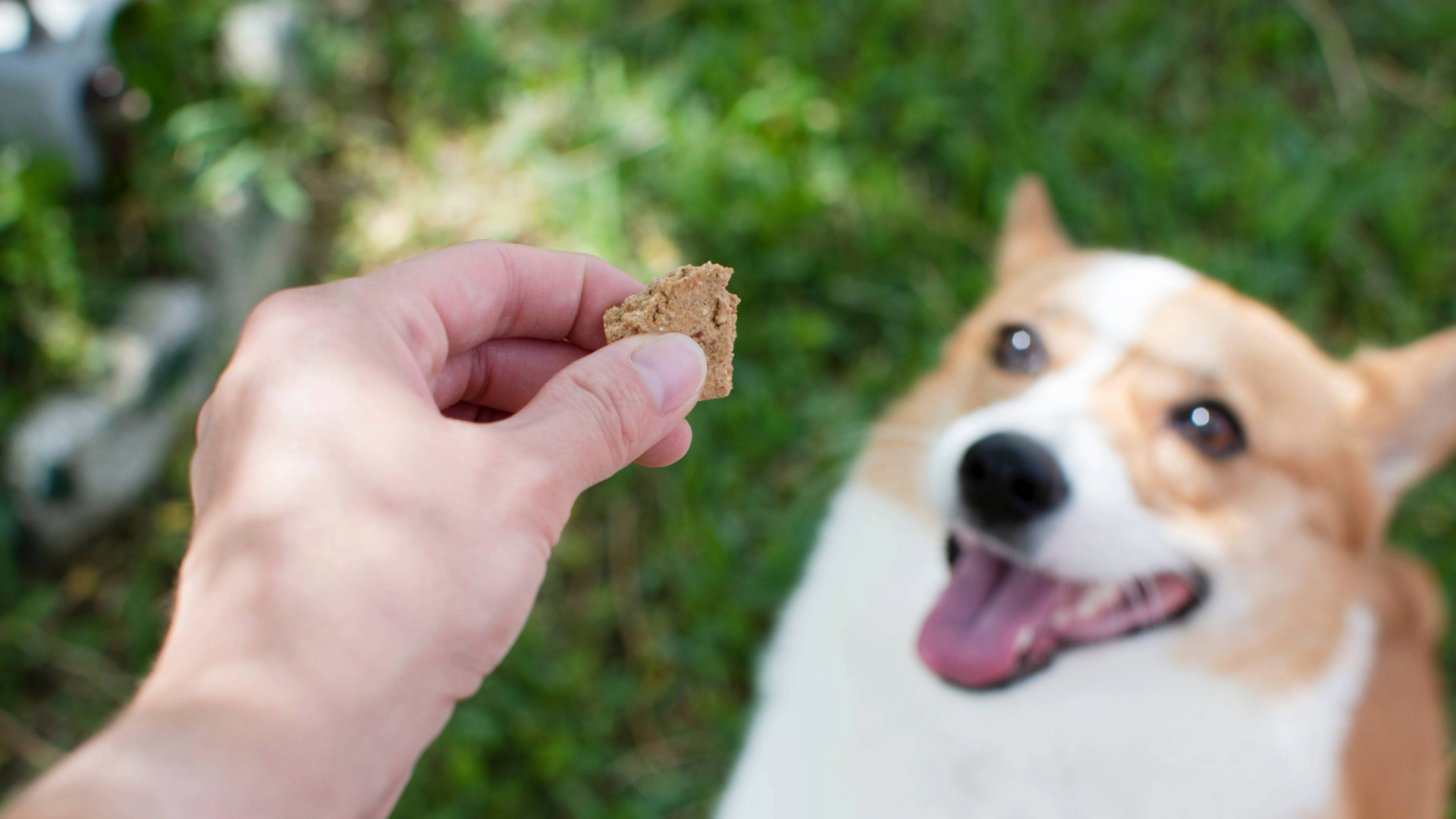
Step 6: Gentle strokes, not pats
Hopefully, the dog has come over to say hi. If they haven’t, it’s best to respect their decision and leave them be.
If they do come over, they usually like to be stroked on the side of their chest or neck, or the chest in front, rather than patted on the head. Remember, move slowly and try not to make sudden movements.
How to approach a dog without an owner
Sometimes, you need to approach a dog who doesn’t have an owner – for example, if you’re trying to catch a stray and get them to safety. I once had to catch a stray Westie on a fast road in Wales – luckily, I’d spotted a vet practice about 300 yards back and we were able to catch the dog and take it there to have its microchip checked.
The dog was clearly terrified and it was probably the riskiest approach I’ve ever had, since I needed to physically catch him and put him in the car. I was very aware that he was scared of me (and of his environment), but with some gentle cajoling he let me get close enough to gently pick him up.
When approaching a dog without an owner, you should always try to tempt the dog towards you rather than approach it, but if this isn’t possible (e.g., the dog is tied up or won’t approach no matter how hard you try) you may need to approach them.
In this case, approach sideways, not making eye contact, and talking to them softly and quietly. Watch for signs that the dog is uncomfortable and likely to bite, and call in animal control or similar if necessary.
If you can get a leash onto the dog, this is a good way to control them and keep them safe. Try to avoid picking them up as this inevitably means your head will be close to them, and the feeling of being trapped is often scary.
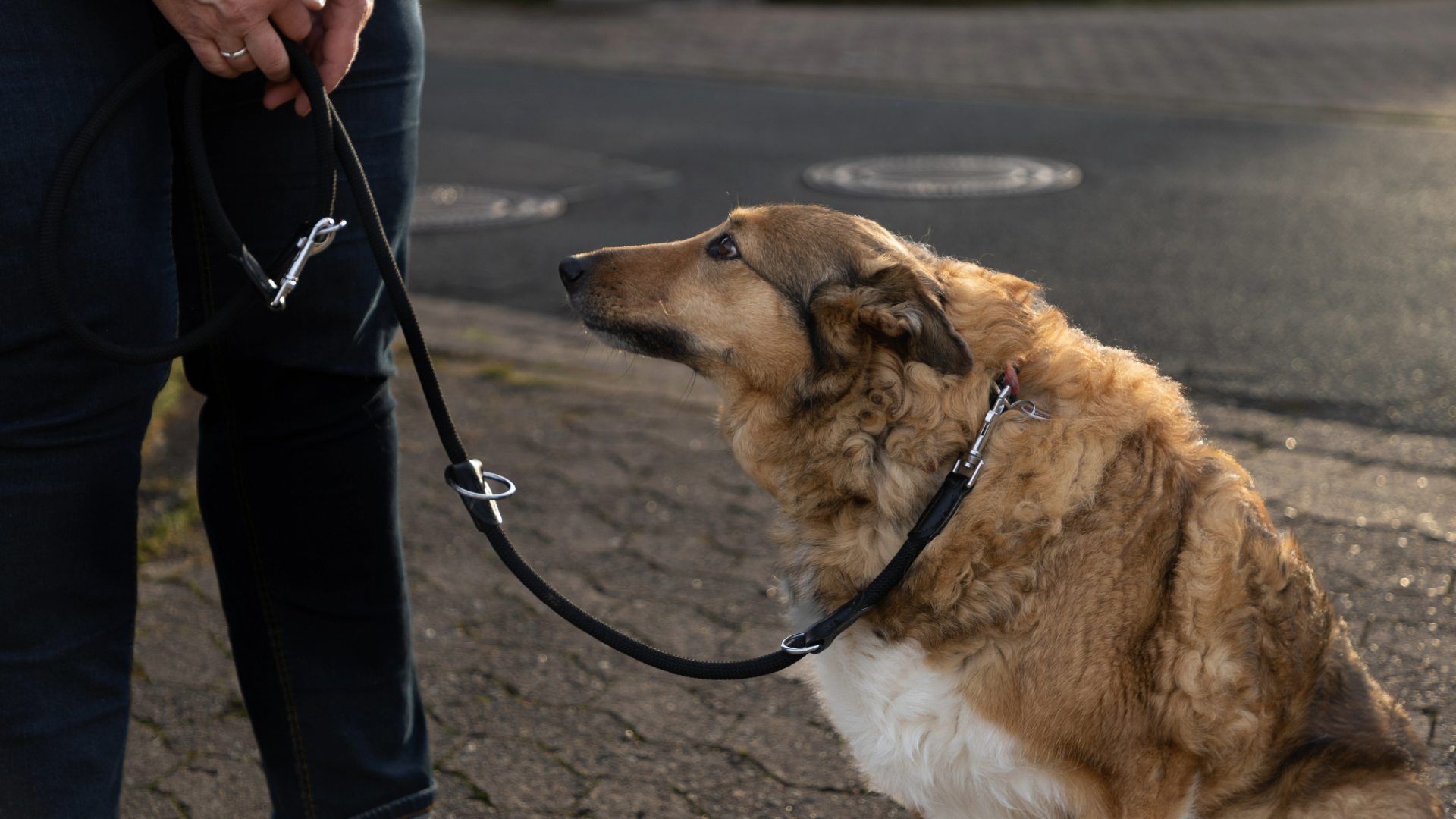
Should you approach a dog palm up or down?
There’s a lot of advice saying you should approach a dog with your hand out to let them sniff. But then that begs the question – palm up or palm down?
Well, it probably doesn’t matter too much – a dog’s sense of smell is plenty good enough that it doesn’t change what they learn about you – but I would suggest neither. Or, at least, palm down but your fingers tucked away, as described above.
Tucking your fingers away protects them, and this is far more important than palm up/palm down debates.
How to greet a barking dog
If a dog is barking, backing away, or nervous, it’s generally best not to greet them. However, sometimes this is unavoidable – for example if you’re visiting a friend or if you’re a pet care professional.
I usually find a simple “Hello, [dog’s name]” shows them that you’ve seen them, while maintaining your distance and chatting to the owner gives them a chance to come to terms with you being there.
In my consult room, I often settle on the floor and roll treats to a nervous dog while talking to the owner – this gives the dog a chance to calm down and come to investigate to see if I have anything else delicious!
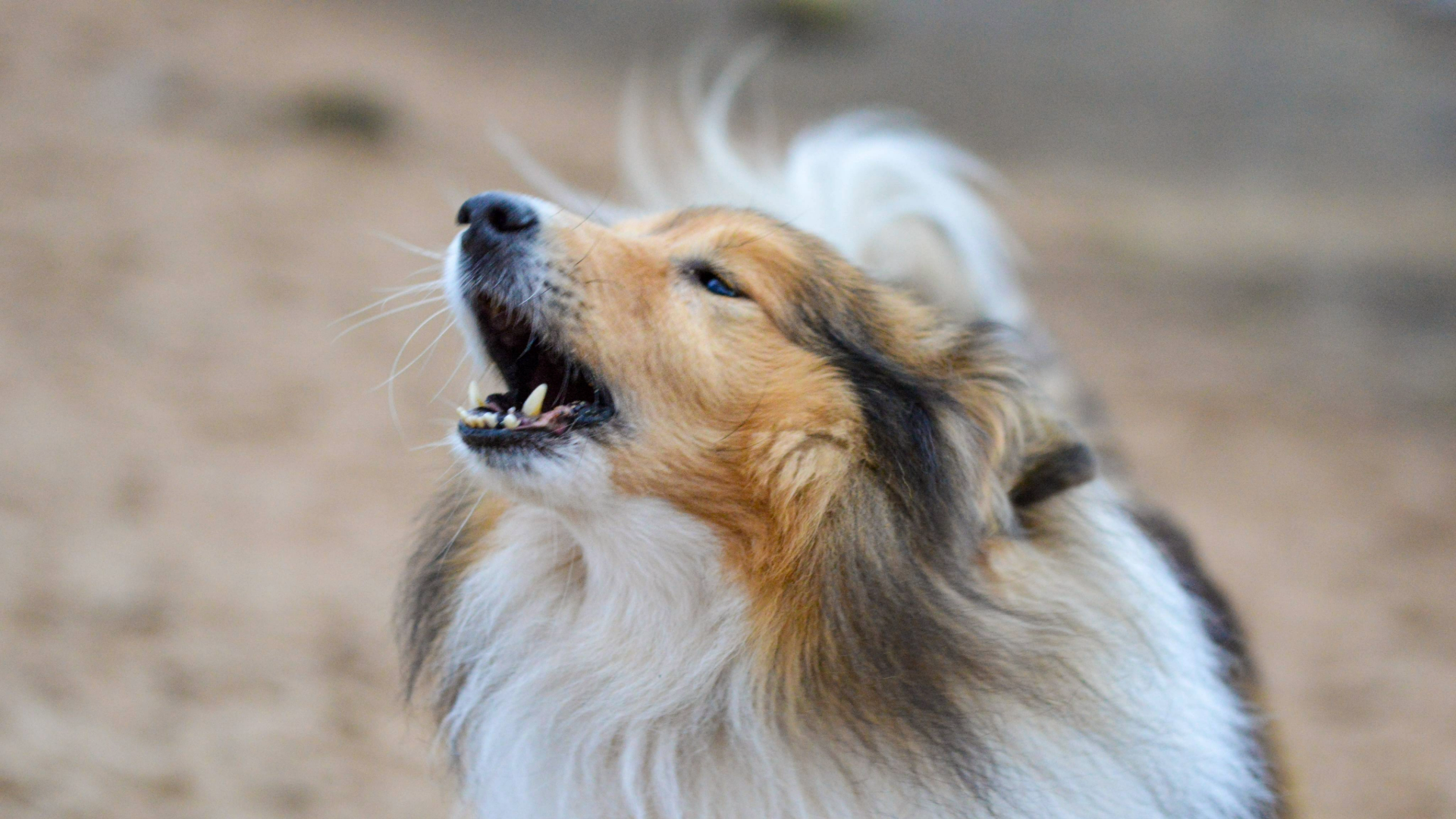
Dos and don’ts of greeting a dog
I thought some quick dos and don’ts would help summarize what we’ve discussed, so here you go:
✅DO make yourself smaller: Even big dogs are smaller than you – try not to loom over their head, but crouch down to make yourself less threatening.
✅DO invite them to come to you: It’s best not to approach a dog, but to invite them to come to you by crouching down and extending a hand.
✅DO offer treats: If you have a chance to prepare, offering treats (with the owner’s permission – watch out for allergies or special diets!) is a sure way to win a dog over.
✅DO watch out for licking, yawning, and wide eyes: Dogs give lots of warning signals saying “please don’t!” long before they bite, but most humans don’t recognize them for what they are. Nervous licks, looking away, tension in the body, yawning, and wide eyes all suggest a dog isn’t comfortable, so stop your approach and let them be. You might want to read our guide on dog body language first.
❌DON’T pat dogs on the head: Not only do you naturally loom over them when you do this, but it’s not a particularly nice greeting. Most dogs prefer a stroke or gentle scratch on the chest or side.
❌DON’T corner them or block them with your body: Many dogs would rather flee than bite, so make sure they have an escape route if they need to. That means standing to their side and giving them space in front of them to get away.
There’s lots of advice out there on how to greet a dog, but not all of it is good. In general, it’s best not to greet a dog unless they come over to say hi, but this isn’t always possible.
In this case, you should try not to make direct eye contact and turn side-on to seem less threatening. Most of all, always keep the dog’s comfort at the forefront of your mind – given time and patience, you’ll soon be a trusted person!
You might also want to read: How to bond with a dog and how to be the best dog owner.
Edited by Megan Milstead.







